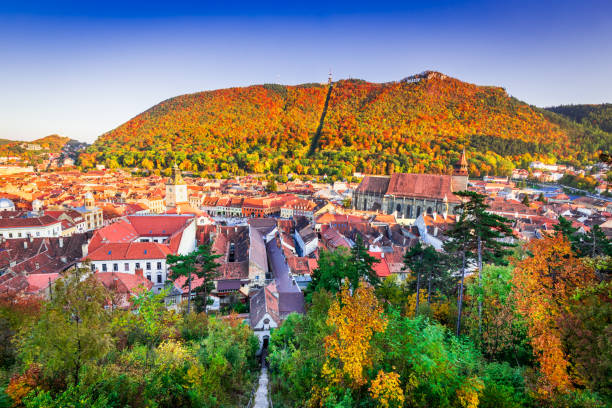Fast Facts
Location: Central Romania (Brașov County)
Size: 74 sq. km
Elevation: 650 meters
Population: 255,000
Inhabited since: 100 BC
First documented: 1234 AD (Corona)
City Highlights
Fringed by the peaks of the Southern Carpathian Mountains and resplendent with gothic, baroque and renaissance architecture, Brasov is one of the most beautiful and visited places in Romania.
Brasov was founded, in 1211, by the Teutonic Knights, on an ancient Dacian site. In the 13th-Century Brasov was settled by the Saxons and shortly became one of Transylvania’s seven walled citadels Siebenburgen.
The location of the city at the intersection of trade routes linking the Ottoman Empire and western Europe, together with friendly tax regime, allowed Saxon merchants to obtain considerable wealth and exert strong political influence in the region.
This was also reflected in the city’s name, Kronstadt (German) or Corona (Latin), meaning the Crown City.
Strong fortifications defending towers were erected and maintained with funding provided the town’s craft guilds. Brasov is home to one of the the narrowest streets in Europe.
The Rope Street (Strada Sforii) is approximately four feet wide;
it connects Strada Cerbului with Strada Poarta Schei
This street was initially used as an access route by firefighters.
The Old Townhall Square (Piața Sfatului) is lined by colorfully painted and richely ornately baroque structures.
Just south of the Townhall Square, the Black Church (Biserica Neagra) – the largest gothic structure in Romania – got its name from the appearance of its exteriour walls, darkened by the flames and smoke of the ‘Great Fire’ of 1689. The impressive interior of the church houses one of the largest organs in Eastern Europe and an unique collection of antique rugs and kilims.
Nearby are towering mountains, rolling fields, thick forests and villages with fortified churches.




